Key takeaways:
- Optimizing distribution channels is crucial for maximizing a film’s audience reach and engagement, requiring an understanding of target demographics and market needs.
- Diverse platforms and collaborations with influencers can amplify distribution efforts and enhance visibility.
- Continuous analysis and adaptability are essential; filmmakers should embrace a trial-and-error approach to refine their strategies based on audience engagement metrics.
- Building a community through authentic communication and sharing experiences—both successes and failures—fosters deeper connections with viewers.
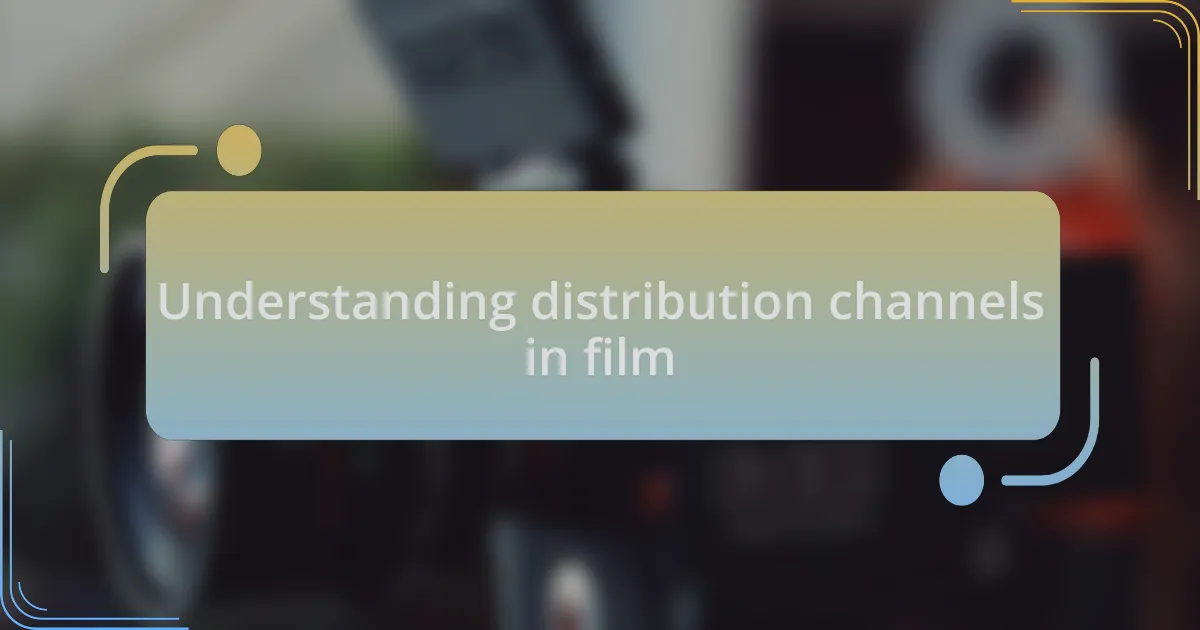
Understanding distribution channels in film
Distribution channels in film are the pathways through which a finished film reaches its audience. From theatrical releases to digital streaming platforms, these channels play a crucial role in a film’s success. I remember my excitement when my first short film found a home on a popular streaming service; it felt like a validation of all the hard work put into the project.
Navigating these channels can be daunting. Have you ever thought about why certain films thrive on streaming platforms while others struggle? This often comes down to understanding target audiences and choosing the right platforms. For instance, I once focused my efforts on niche festivals that cater to specific genres, and that decision helped my film connect deeply with a passionate audience.
Moreover, the landscape is constantly evolving. With the rise of crowdfunding and social media marketing, filmmakers can now take more control over their distribution strategies than ever before. Reflecting on my journey, it’s empowering to see how many filmmakers are now creating their own distribution networks; the possibilities seem limitless.

Importance of optimizing distribution
Optimizing distribution is essential for maximizing a film’s reach and impact. When I secured a spot for my film in a well-curated online film festival, it opened doors I never anticipated. I realized that by concentrating on the right platforms, I could significantly enhance visibility and engagement with audiences that truly appreciated my work.
Every film has a unique voice, and the distribution strategy can amplify that voice at the right moment. I once chose a distribution channel that seemed less popular, but it turned out to cater to an audience eager for fresh storytelling. The unexpected enthusiasm I encountered from viewers taught me that sometimes it’s all about finding that niche where your film can resonate deeply.
The importance of optimizing distribution cannot be overstated, especially as new technologies emerge. I remember the moment I integrated social media campaigns into my distribution strategy; suddenly, my film was not just a product but a conversation starter. This connection fostered a community around my film, showing me that smart distribution isn’t just about sales—it’s about building relationships with viewers that last beyond the credits.
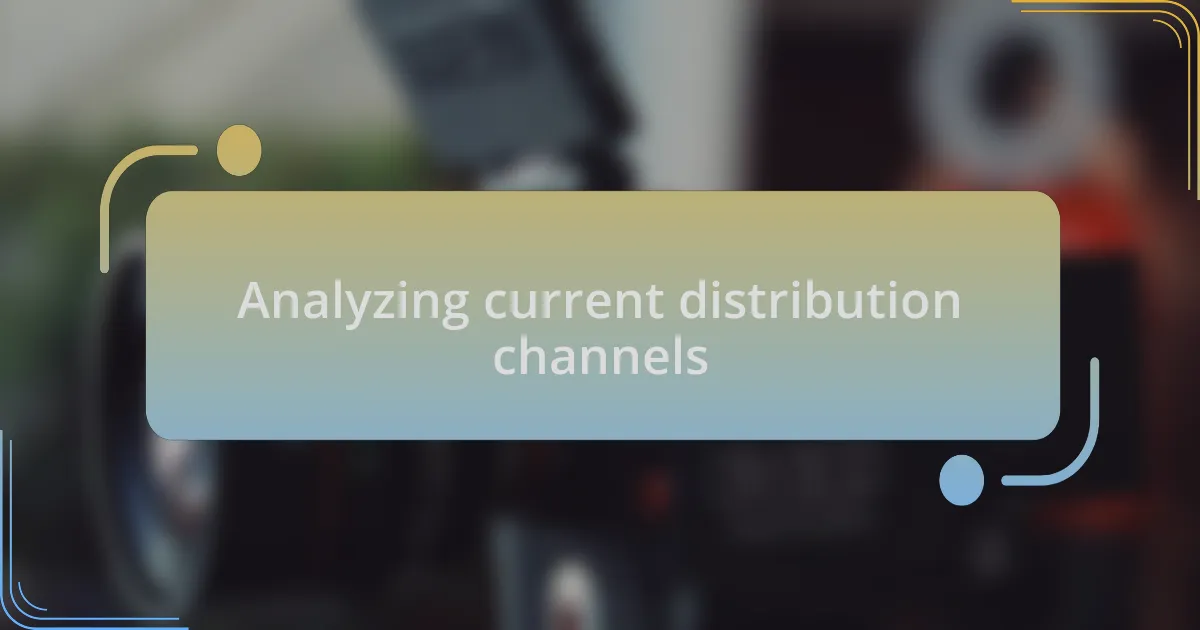
Analyzing current distribution channels
Analyzing my current distribution channels required a deep dive into where my film was gaining traction and where it was falling short. I vividly recall sitting down with analytics, examining viewer demographics and engagement metrics. To my surprise, certain platforms delivered stronger results than anticipated, leading me to wonder—how many filmmakers overlook these insights in their rush to distribute?
It became evident that not all platforms serve every project equally. I discovered that niche streaming services, often dismissed as too small, could create dedicated audiences who genuinely valued the content. Realizing this shifted my perspective; I started to see these channels not as afterthoughts but as vital pathways for connecting with committed viewers.
This analysis didn’t just provide clarity; it sparked creativity. I positioned my film to engage with stories that truly resonate, inspiring me to tailor promotional efforts. Reflecting on this experience, I now ask myself—do I continue to monitor these channels closely, adapting my strategies as the landscape evolves? The answer, I found, is a resounding yes.
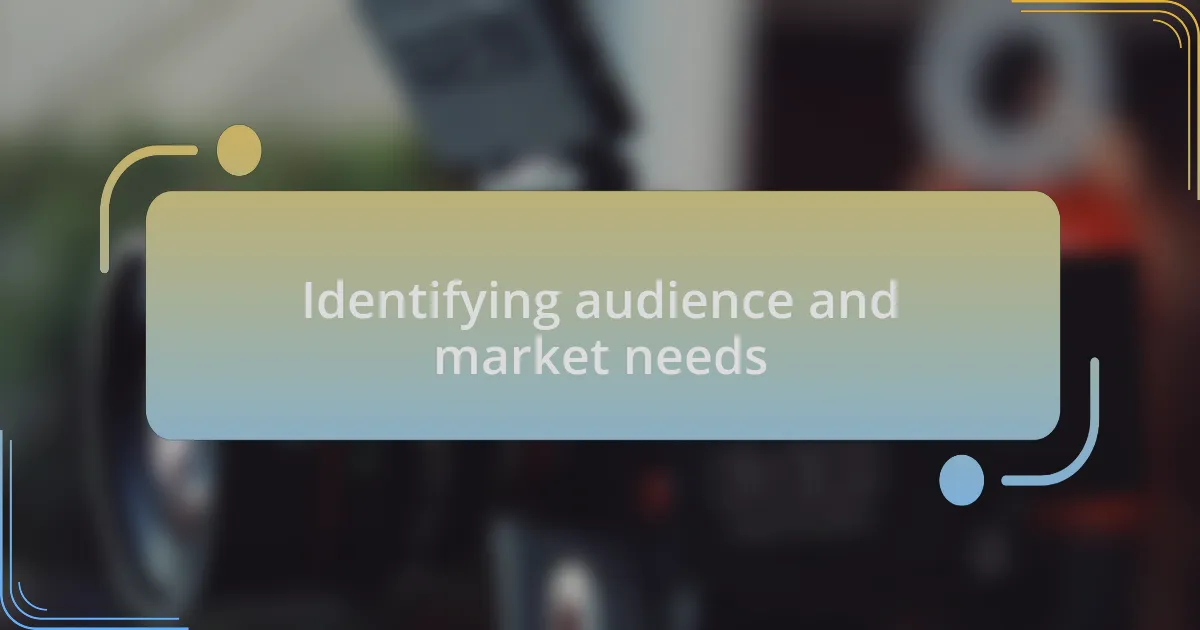
Identifying audience and market needs
Identifying my audience and their market needs was a game-changer in my distribution strategy. I remember attending a film festival and engaging with various viewers, directly asking them what drew them to specific films. Their candid feedback—whether it was the storyline, actor performances, or production design—helped shape my understanding of the core elements that resonate with different demographics.
One particular interaction sticks with me: a young filmmaker shared how she feels overwhelmed by the choices available on streaming platforms. This moment illuminated the importance of clarity and targeted messaging. If an audience is confused about what a film offers, they are likely to skip right past it. This realization drove me to ensure that my promotional materials clearly communicated not just the film’s plot, but the emotional journeys viewers could expect.
With this firsthand insight in hand, I shifted my approach. Social media became a listening post, where I actively sought opinions and trends. Have I truly tapped into what my audience craves? By cultivating a dialogue, I not only realigned my marketing strategies but also felt a genuine connection develop. This effort transformed data analysis into a more profound understanding of what the audience genuinely wants, making the entire distribution process feel more collaborative and intentional.
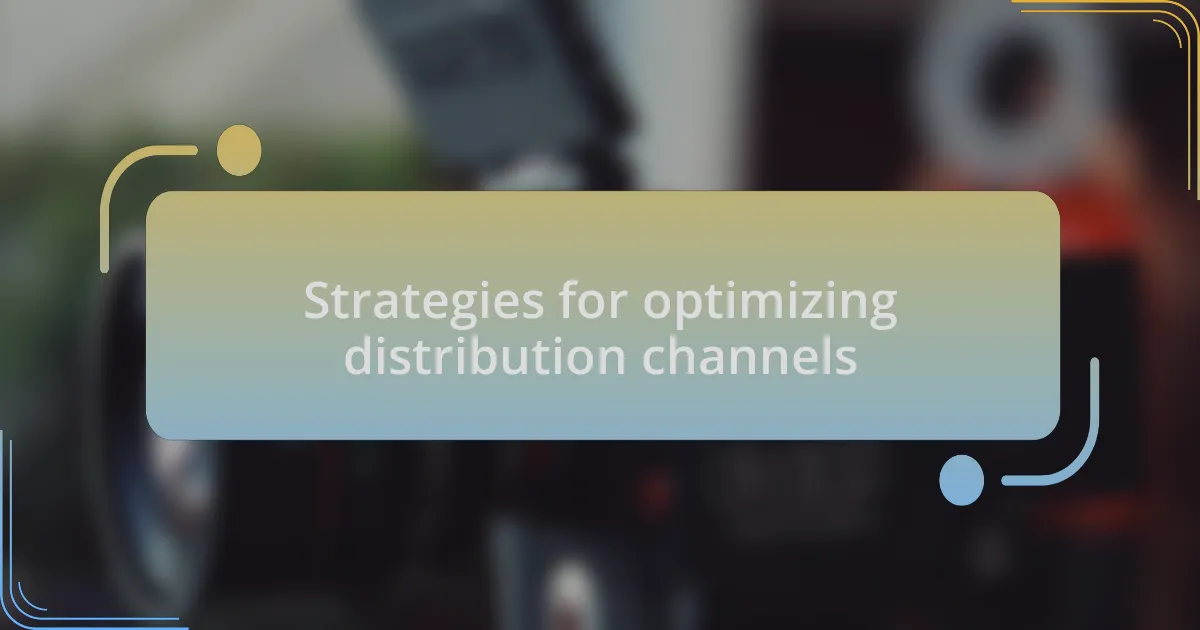
Strategies for optimizing distribution channels
When it comes to optimizing distribution channels, one strategy I found effective was diversifying my platforms. Initially, I focused solely on traditional film festivals and physical screenings, but after realizing the potential of online streaming, I decided to embrace digital distribution. What surprised me was not just the reach—films I distributed online found audiences in unexpected corners of the world—but also the way those audiences engaged with the content. Each platform offered unique opportunities to connect with viewers, inspiring me to tailor my marketing messages for specific channels.
I also found that collaborating with influencers greatly amplified my distribution efforts. Once, I partnered with a popular film critic for a review and social media takeover, which led to a significant spike in viewership. It made me rethink the importance of networks; sometimes, a trusted voice can bridge the gap between a good film and wide recognition. Since then, I’ve actively sought alliances with people who resonate with my target audience, understanding that their endorsement can lead to increased credibility and awareness.
Finally, I learned the value of ongoing analysis and adjustments. After a distribution campaign, I meticulously reviewed audience engagement metrics. What worked? What fell flat? It was a real eye-opener when I noticed how certain marketing messages attracted far more attention than others. This iterative process helped refine my strategies, ensuring that each subsequent release would be informed by the successes and failures of past efforts. Have you considered how important it is to remain flexible in your approach? Adapting based on data not only optimizes distribution but also nurtures a deeper connection with the audience.
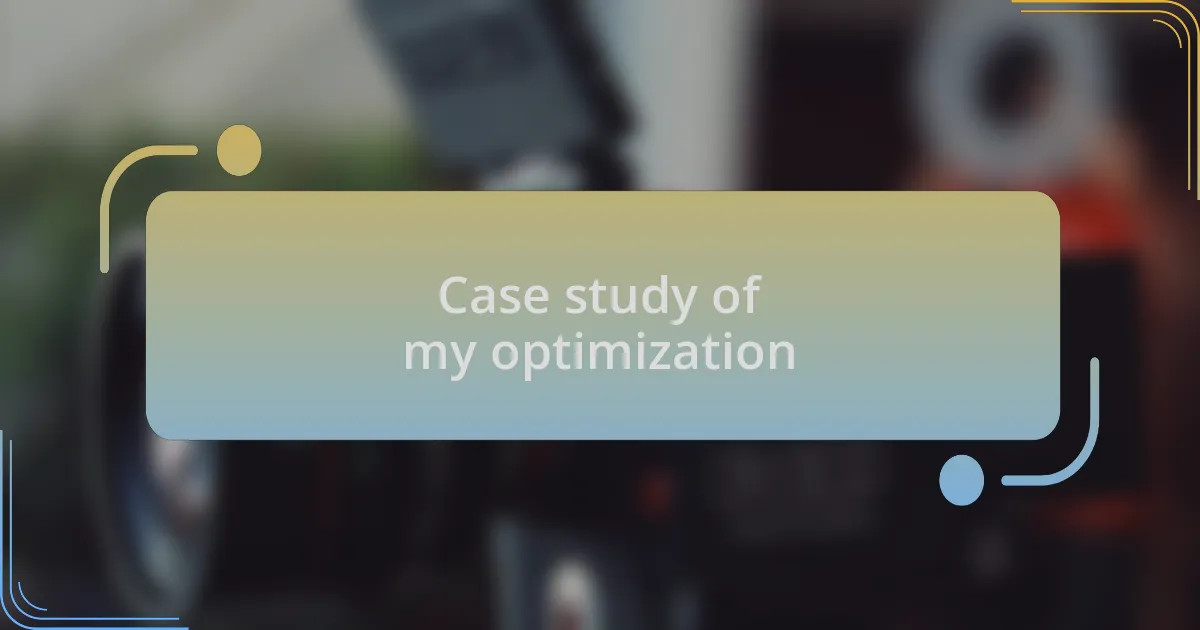
Case study of my optimization
As I delved deeper into optimizing distribution, I encountered a pivotal moment during a campaign for a short film I’d produced. I remember pouring over analytics that revealed a surprising trend: audiences in particular regions were responding exceptionally well to behind-the-scenes content. This drove me to create more intimate, candid videos that showcased the production process, and it transformed my engagement rates. Have you ever tapped into the voice of your audience in such a way? It certainly opened my eyes to the power of authenticity.
Another significant change was my approach to email marketing. I initially treated it just as a box to check off—a monthly newsletter with updates and articles. However, after experimenting with personalized content that addressed specific viewer preferences, I was amazed at the response. People began not only opening emails but also sharing them, turning my distribution strategy into a community dialogue. Isn’t it fascinating how a simple change can lead to such profound connections?
I also recall a particularly challenging project where I faced logistical hurdles that threatened my timeline. It was a moment filled with anxiety, but I leaned on my networks, reaching out to fellow filmmakers for advice and support. This collaboration not only helped me stay on track but also broadened my distribution reach through their established channels. In retrospect, it’s clear that the film industry thrives on collaboration. Are we maximizing the power of our networks enough? For me, that realization was a game changer.

Lessons learned from my experience
Throughout my journey in optimizing distribution channels, one key lesson was the importance of being adaptable. I recall a moment when I over-committed to one particular platform, assuming it would yield the highest engagement. When the results fell short, I felt disheartened, but it pushed me to explore alternative channels, ultimately leading to a more balanced and effective strategy. Have you ever had to pivot unexpectedly in your approach?
Another lesson that stood out for me was the value of testing and iteration. Initially, I rolled out a standardized campaign across all platforms, thinking consistency was key. But when I began to segment my audience and tailor messaging, I saw significantly higher engagement metrics. It was eye-opening to realize that what works for one group might not resonate at all with another. Isn’t it liberating to embrace a trial-and-error mindset?
Lastly, I learned that sharing my failures was just as important as celebrating my successes. During a film festival submission, I had my share of rejections. Instead of shying away from discussing these setbacks, I started sharing those experiences in forums and social media. The response was overwhelming; other filmmakers reached out to share their own stories. It reinforced my belief that vulnerability fosters community. How often do we consider our struggles as opportunities for connection?